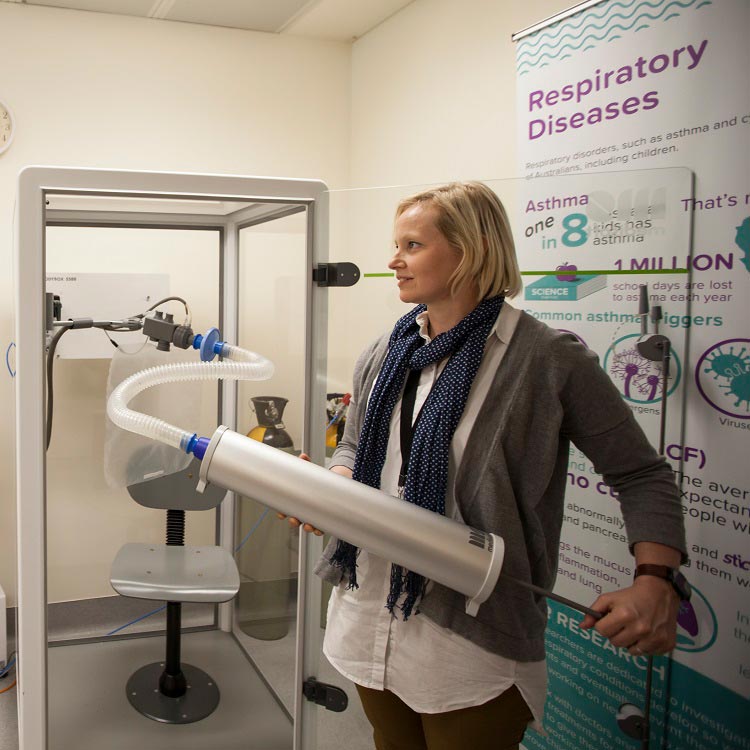Search
Research
Lipopolysaccharide-induced interferon response networks at birth are predictive of severe viral lower respiratory infections in the first year of lifeAppropriate innate immune function is essential to limit pathogenesis and severity of severe lower respiratory infections (sLRI) during infancy, a leading cause of hospitalization and risk factor for subsequent asthma in this age group.
Research
Association between early respiratory viral infections and structural lung disease in infants with cystic fibrosisInfants with cystic fibrosis (CF) develop structural lung disease early in life, and viral infections are associated with progressive lung disease. We hypothesized that the presence of respiratory viruses would be associated with structural lung disease on computed tomography (CT) of the chest in infants with CF.

News & Events
Very preterm babies at risk of declining lung function throughout childhoodA The Kids Research Institute Australia study published in The Lancet Child & Adolescent Health has found that survivors of very preterm birth face declining lung function
Research
Use of a primary epithelial cell screening tool to investigate phage therapy in cystic fibrosisThis study demonstrates the feasibility of utilizing pre-clinical in vitro culture models to screen therapeutic candidates
Research
Changing Prevalence of Lower Airway Infections in Young Children with Cystic FibrosisAspergillus species and P. aeruginosa are commonly present in the lower airways from infancy
Research
Effect of posture on lung ventilation distribution and associations with structure in children with cystic fibrosisBackground: We assessed the effect of posture on ventilation distribution and the impact on associations with structural lung disease.
Research
Chest imaging in cystic fibrosis studies: What counts, and can be counted?The aim of this study is to characterize the role of currently available CT and MRI markers in clinical studies, and to discuss challenges with CF studies.
Research
Air trapping in early cystic fibrosis lung disease-Does CT tell the full story?Mosaic attenuation on expiratory chest computed tomography (CT) is common in early life cystic fibrosis (CF) and often referred to as "air trapping"
Research
The AREST CF experience in biobanking - More than just tissues, tubes and time.Research to further improve outcomes for people with CF is dependent upon well characterised, archived and accessible clinical specimens.
Research
Air pollution during pregnancy and lung development in the childAir pollution exposure has increased in recent years and there is evidence that exposure to particulate matter can lead to adverse respiratory outcomes.
